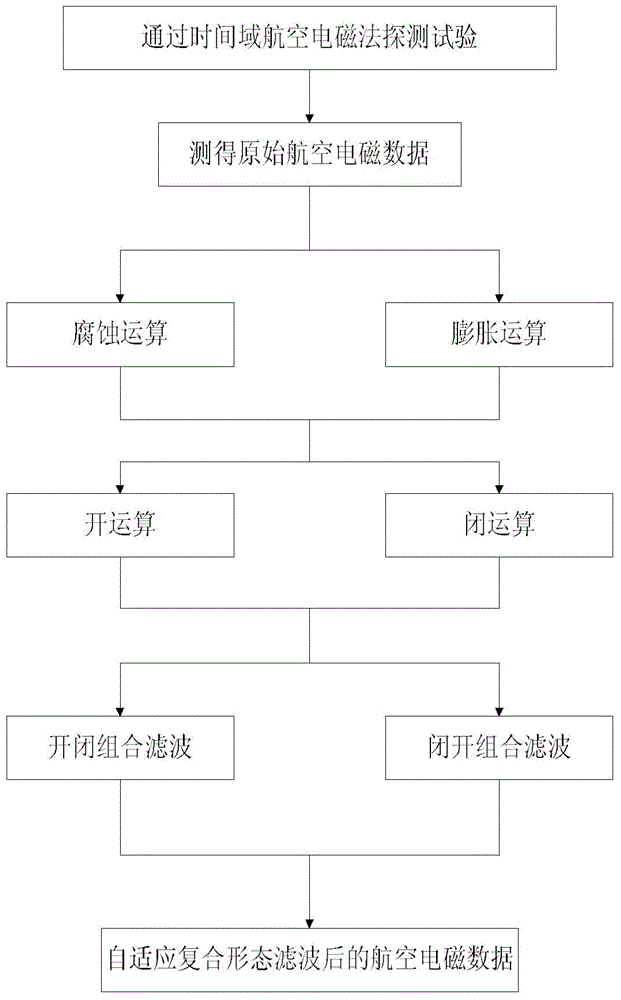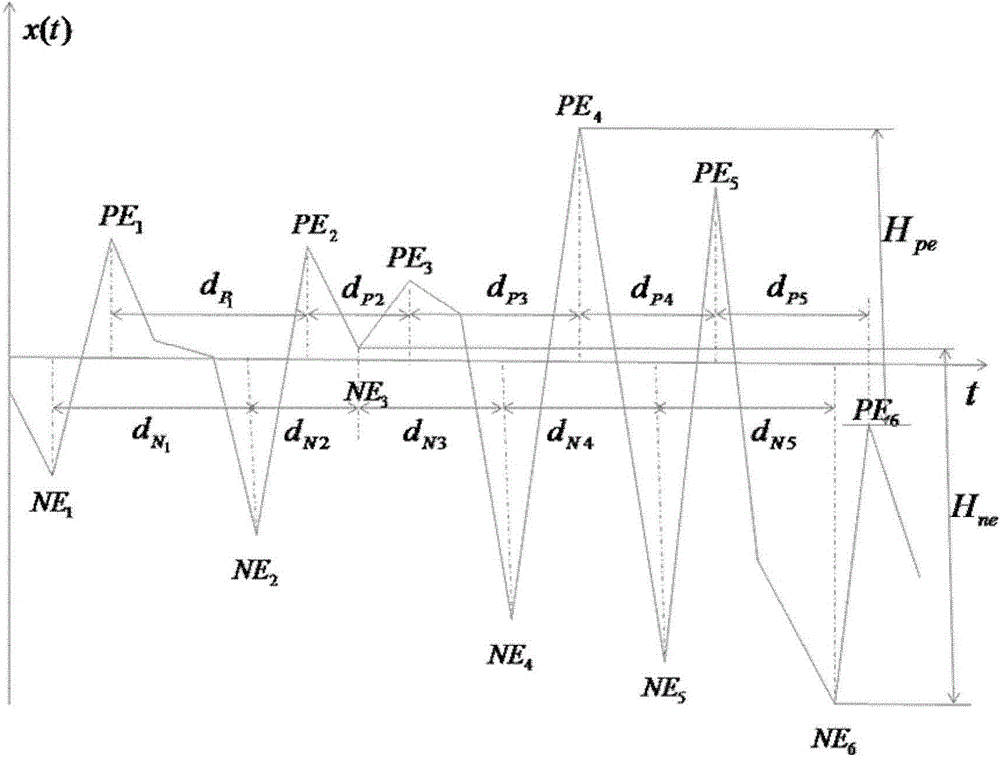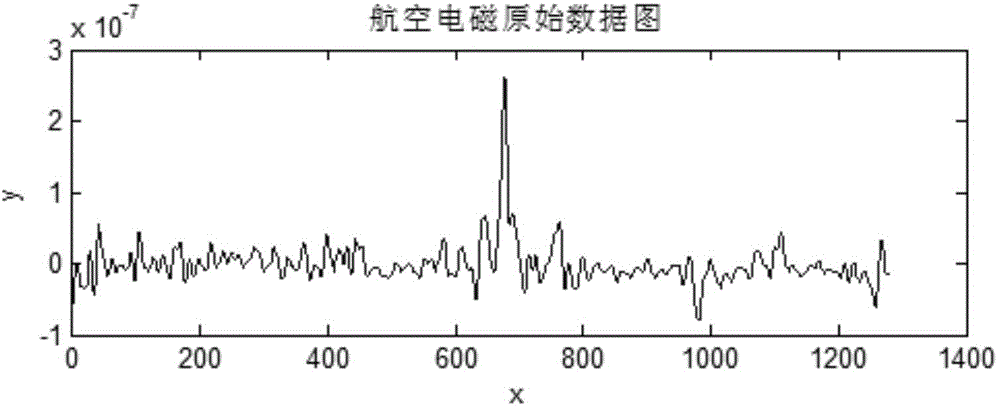Airborne electromagnetic data denoising method based on mathematical morphology
A mathematical morphology and aviation electromagnetic technology, applied in the field of aviation electromagnetics and time domain aviation electromagnetics, can solve the problems of complex morphological filtering of noise components, difficult to obtain accurate and effective prior knowledge, and non-uniform distribution of noise.
- Summary
- Abstract
- Description
- Claims
- Application Information
AI Technical Summary
Problems solved by technology
Method used
Image
Examples
Embodiment 1
[0058] (1) Raw airborne electromagnetic data obtained through the time-domain helicopter electromagnetic detection flight test. Specifically: use the data acquisition hardware circuit of the aeronautical electromagnetic detection system to obtain the waveform data of the detection result, and perform regular and equal interval sampling through the data acquisition hardware circuit to collect the original signal data of the aeronautical electromagnetic detection system.
[0059] (2) The triangular structural element is suitable for filtering positive and negative pulse noise interference, and the semicircular structural element is suitable for filtering random noise interference. Therefore, the use of triangular and semicircular structural elements is considered to perform complex morphological filtering on the original signal. The specific process is as follows:
[0060] (1) First, corrode, expand, open and close the signal respectively:
[0061] Corrosion operation: ...
PUM
 Login to View More
Login to View More Abstract
Description
Claims
Application Information
 Login to View More
Login to View More - R&D
- Intellectual Property
- Life Sciences
- Materials
- Tech Scout
- Unparalleled Data Quality
- Higher Quality Content
- 60% Fewer Hallucinations
Browse by: Latest US Patents, China's latest patents, Technical Efficacy Thesaurus, Application Domain, Technology Topic, Popular Technical Reports.
© 2025 PatSnap. All rights reserved.Legal|Privacy policy|Modern Slavery Act Transparency Statement|Sitemap|About US| Contact US: help@patsnap.com



